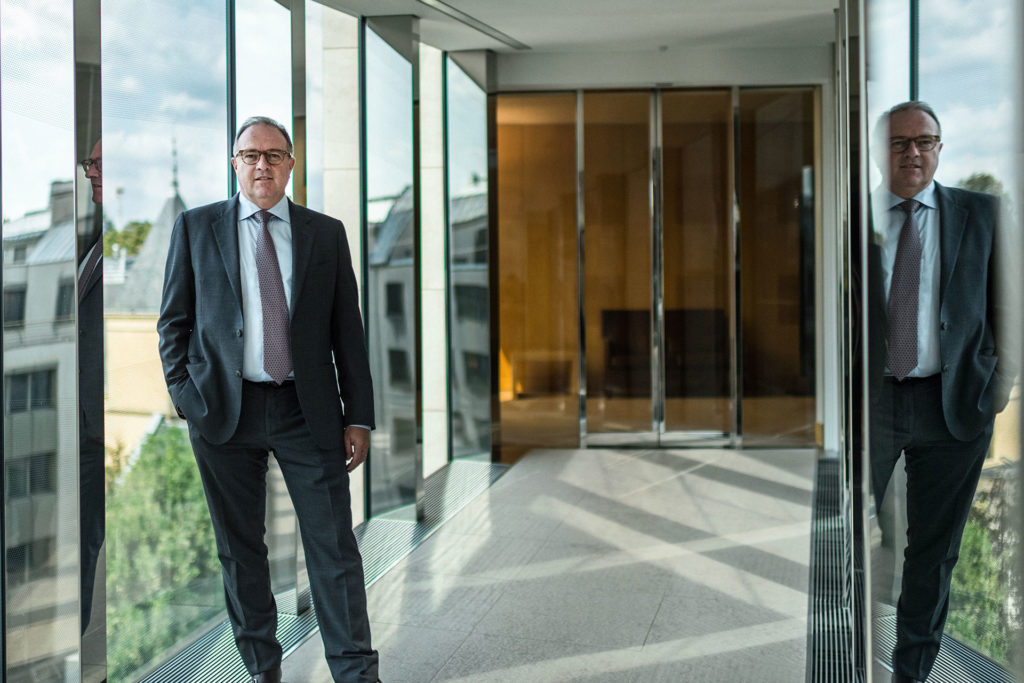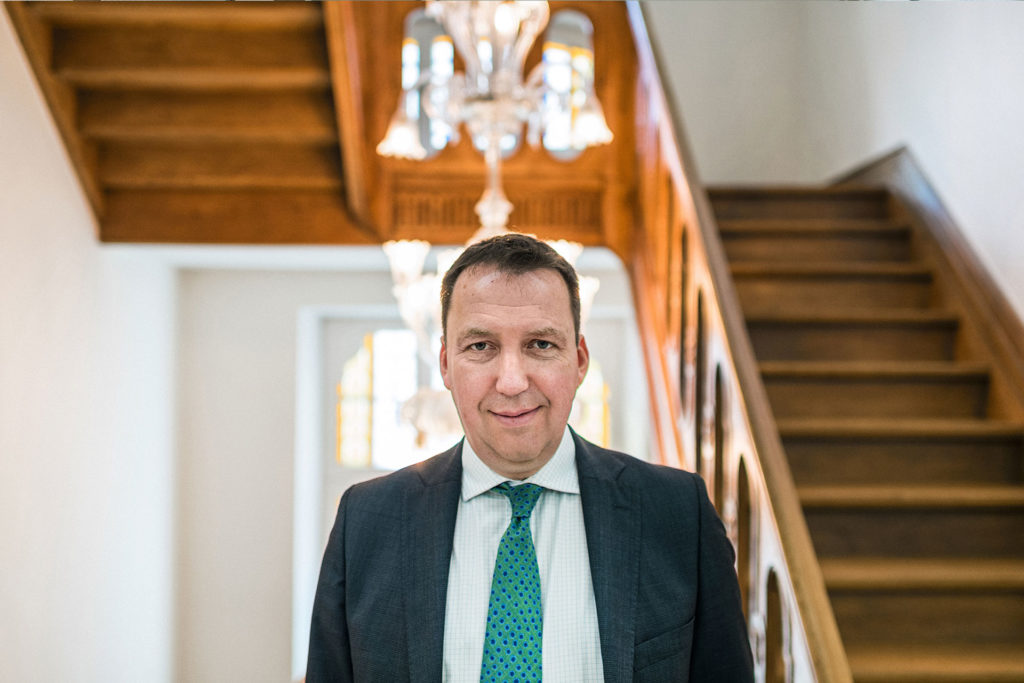Sustainable and responsible investing continues to grow, spanning a wide range of products. We have taken a look at the latest developments and trends.
GEOGRAPHY AND GENDER
Banque de Luxembourg has been advising international clients on socially responsible investing (“SRI”) for more than a decade since the bank launched its first SRI fund in 2007.
“Initially, Belgian and Dutch clients, as well as clients from the northern countries seemed to be most open to the idea of sustainable investing. Today, things have changed,” says Pierre Ahlborn, CEO and Managing Director at Banque de Luxembourg.

SRI investing generates interest from a significant part of our clients, regardless of their nationality and country of residence.
In addition to millennials, women are also more receptive to socially responsible investments. A study by Morgan Stanley in 2017, revealed that 84% of women, compared to only 67% of men, show interest in SRI products and solutions.
“We have witnessed this first hand as we run an initiative called Femme et Patrimoine. Since its launch in 2011, we’ve clearly seen that women are very attentive to the topic,” adds Mr Ahlborn.

Pierre Ahlborn
A DECADE OF GROWTH
For a long time, SRI products were reserved to institutional and knowledgeable clients, but today a much larger share of private clients can access them. “Today, most SRI funds are UCITS products so they are accessible to a larger band of clientele,” comments Mr Ahlborn. Also, retirement savings plans and sovereign funds have included non-financial criteria in the selection of their investments. “They have been strong drivers of change. Their selection processes have triggered a multiplication of funds that are labeled SRI”.
Finally, SRI funds do not seem to be penalised in terms of performance. Investors should not expect to do better than traditional stock investing, but there is no sign that SRI investments perform worse than a traditional stock portfolio.

Today, most SRI funds are UCITS products so they are accessible to a larger band of clientele.
Nonetheless, one of the challenges that has been experienced is that the performance of a number of SRI funds was impacted by external factors such as public subsidies or taxes.
“Especially in solar energy, governments worldwide suddenly decided to encourage solar energy, then the subsequent government decided to abolish them. This sort of thing causes major damage and is a specific issue in green funds,” says Mr Ahlborn.
CHANGES IN CLIENT RELATIONSHIP MANAGEMENT
The new EU action plan on sustainable finance puts the interests of potential investors centremost. To ensure that sustainability factors are in compliance with investors’ preferences, the EU will amend the Markets in Financial Instruments Directive (“MiFID II”) and Insurance Distribution Directive (“IDD”) regulatory frameworks for banks and insurers respectively. As a result, change management programs for client relationship managers have become necessary.
“Our investment advisors and relationship managers are being trained in order to acquire the knowledge and skills to explain SRI and to inform the client what we are doing. We have decided to more resolutely go in the direction of generalising an SRI approach throughout the bank,” explains Mr Ahlborn. It’s easy to feel disoriented by the different labels that exist. Therefore, client relationship managers need to help clients understand which criteria the bank has chosen. “We have decided to enlarge UN PRI (United Nations Principles of Responsible Investment) and SRI principles to all the solutions that we offer. As a basis, we have chosen internationally accepted standards, such as the UN PRI, and from there on we refine the strategy and exclude, for example, investments in coal.”
MILLENNIALS AND IMPACT INVESTING
One trend that will certainly help to drive further growth in sustainable investments is the power and influence of the younger generations.
“Millennials have a particular affinity for the dual bottom line approach of impact investing,” says Gilbert Schintgen, Managing Director and Member of the Board of Directors at UBS Fund Management (Luxembourg). UBS has a wide range of active and passive funds domiciled in Luxembourg and ESG considerations are integrated in all actively managed funds. According to the recently published UBS/PwC Billionaires report, many millennials inheriting billionaire wealth see business success as a way of benefiting society.

Millennials have a particular affinity for the dual bottom line approach of impact investing.
Their view is that business goals must deliver not only returns to the family, but also tangible benefits to a wide group of stakeholders – including employees, customers, and society at large. While corporate sustainability has often been criticised as “greenwashing”, young billionaires are passionately committed to their cause and we see this influencing the sustainability objectives of our clients,” he adds.
FROM ILLIQUID TO LIQUID
Gilbert Schintgen expects an increasing trend towards impact strategies. Previously this has been a challenge for institutional investors, even though there is a clear demand for investment strategies that have a positive social and environmental impact.
“Traditionally, impact investing has been concentrated in illiquid asset classes such as private equity and private debt. Moves to set up impact investing strategies into more liquid assets have been controversial, mainly because key impact investing criteria such as “intent”, “measurement”, “verification” and “additionality” are difficult to prove.”
However, new methodologies are being developed to overcome these obstacles. “Within our business we are working extensively to mainstream impact investing through our more liquid strategies such as fixed income and publicly listed equities. We’re doing this through the use of new measurement techniques and strategic engagement approaches designed to target specific outcomes,” explains Mr Schintgen.
STRONG DEMAND FOR ACTIVE AS WELL AS PASSIVE FUNDS
Demand for both passive and active sustainable funds has been very strong.
“Growth rates in our sustainability strategies have been over 75% annually over the past two years, reflecting strong demand from both institutional and private clients in sustainable investment strategies,” continues Mr Schintgen.
UBS’ actively managed sustainable funds use a combined analysis of sustainability and financial performance. Sustainability performance is measured via a propriety score that UBS has developed, and companies in the sustainability funds need to be in the top 40% within their industry groups and the top half of their alpha potential versus sector peers to qualify for investment. In addition, we have a broad range of passive and ETF strategies that integrate sustainability criteria, from best-in-class sustainability ETFs, to the Climate Aware Strategy, which integrates carbon and climate change data into a passive-like rules based strategy with a low tracking error versus FTSE Developed World. UBS has also found that partnering with leading institutional investors has been one of the best drivers of innovative new products, as these partnership often help to address gaps in the marketplace on sustainable investment.

Growth rates in our sustainability strategies have been over 75% annually over the past two years, reflecting strong demand from both institutional and private clients in sustainable investment strategies.
Gilbert Schintgen explains: “We are partnering with a large Dutch institutional investor on developing a unique set of impact measurement metrics, which has provided a basis for the launch of an impact equity fund, which provides a unique opportunity to apply the principles of impact investment to the public equities space. We also worked together with a UK institutional investor on developing the Climate Aware Strategy, which combines a quantitative, forward-looking assessment of future climate change risks into a passive equity strategy. This strategy is supplemented by an engagement program where we reach out to high risk companies to realise positive changes and orient company strategies towards behaviour that reduce climate change risk.
CONSOLIDATION
The sustainable investment market is diverse and growing, which reflects a wide range of approaches to integrating sustainability.
“In terms of sustainability data providers and research providers, there has been a large amount of consolidation in the market with three main providers emerging, MSCI, Sustainalytics, and ISS/Ethix/Oekom. In terms of raw data both Bloomberg and Thomson Reuters have sustainable data offerings. This consolidation is to be expected similar to the consolidation of mainstream data providers. There may be some additional consolidation in the market, but there are not many smaller independent providers left in the market of any great significance,” concludes Mr Schintgen.
THE LONG-TERM VIEW: ENERGY TRANSITION
Insurers must make sure they can meet their commitments many years down the line, therefore investing sustainably has become fundamental part of their strategy.
For instance, BNP Paribas Cardif aims to double its positive impact investments by 2020 while accelerating the energy transition. The insurer has stopped financing coal-fired power plants and has outlined a strategy to more than double its investments in the renewable energy sector (from 6.9 billion EUR in 2014 to 15 billion EUR in 2020).

Jacques Feyrol

A standardised framework will definitely support growth and trust in responsible investment strategies, in terms of concepts as well as metrics.
Cardif Lux Vie started to manage its own General Fund in 2012, which stood at 8.1 billion EUR at the end of December 2017. “Two years ago, we adopted an SRI methodology relying on the rating method of Vigéo Eiristo select securities according to financial as well as relevant extra-financial criteria, such as the ESG performance, the carbon footprint and the energy transition strategy. The ESG performance analysis favours companies which are “Best in Class” in their sector, whereas the analysis of carbon emission and energy transition policy favours companies with solid energy transition strategies on a “Best Effort” basis,” says Jacques Faveyrol, CEO at Cardif Lux Vie.
In addition to the Vigéo method, the asset management team pays particular attention to the sectorial exposure, as exemplified by their limited bond investments in utilities generating power from non-renewable sources. Regarding indirect investments (via funds) held in the general fund portfolio, although ESG and carbon filters are not necessarily applied on their underlying assets, the SRI profile is taken into account amongst other factors before investing. “Since 2014, we have not invested in any newly launched Private Equity, Infrastructure or Private Debt funds whose purpose would be directly and predominantly to fund fossil energy extraction projects (coal, oil, natural gas),” adds Jacques Faveyrol.
A STANDARDISED FRAMEWORK
What many have learned is that there is a true lack of consistency in the overall SRI framework, which means that institutional investors are also facing some difficulties in communicating on the impact, as there are no shared metrics to measure the environmental impact of their investments.
“A standardised framework will definitely support growth and trust in responsible investment strategies, in terms of concepts as well as metrics. People need to understand what impact they have when they choose such an approach: monitoring financial performance alone is not enough to get investors to validate the conscious choice they have made,” continues Jacques Faveyrol. As a consequence, the creation of labels will strengthen clients‘ trust in socially responsible funds by providing greater transparency. Lastly, financial education can and must contribute in raising awareness among potential investors about the goals and methodologies of responsible investments. Indeed, institutional investors have an important role to play as disseminators of information.

